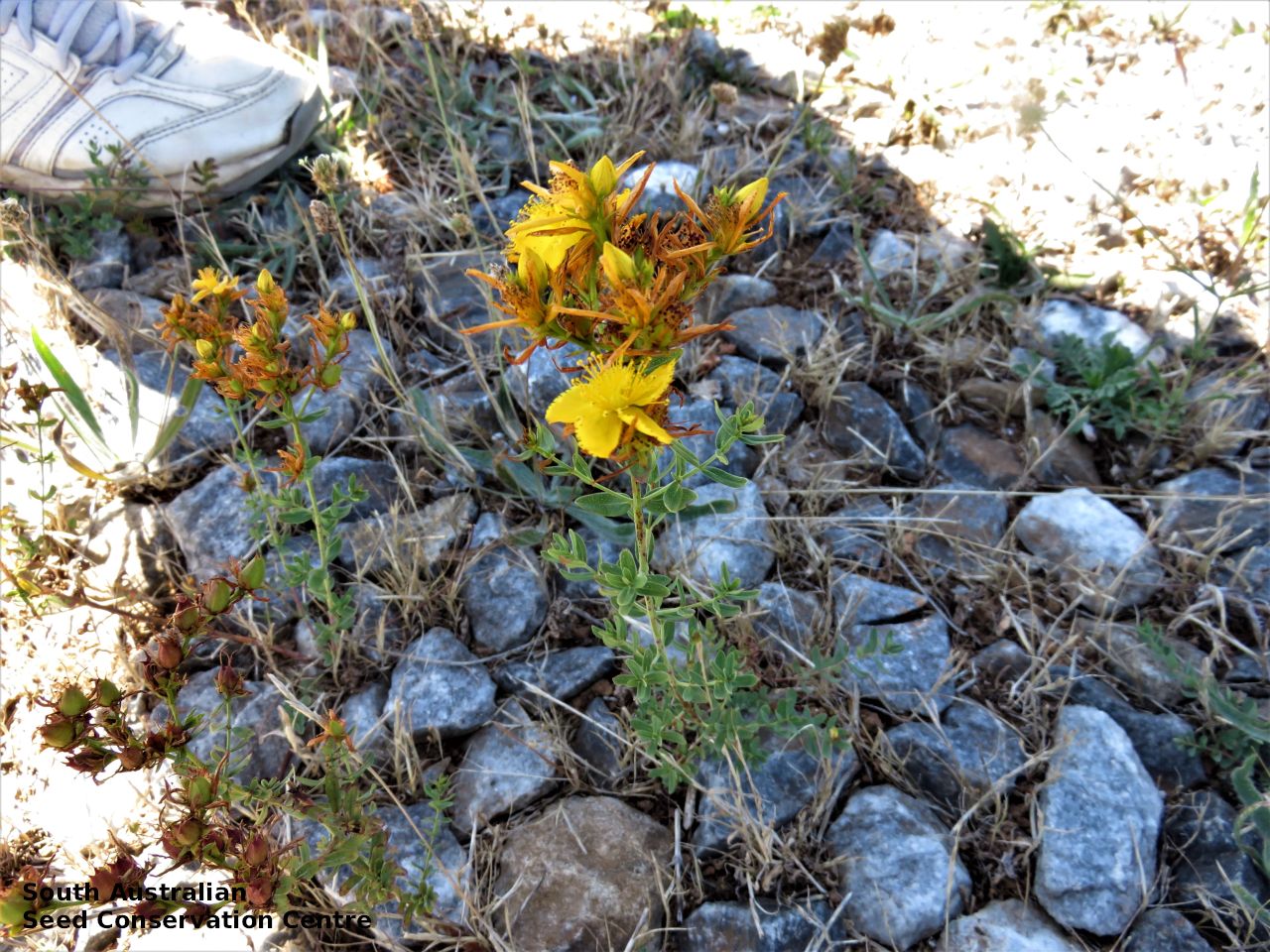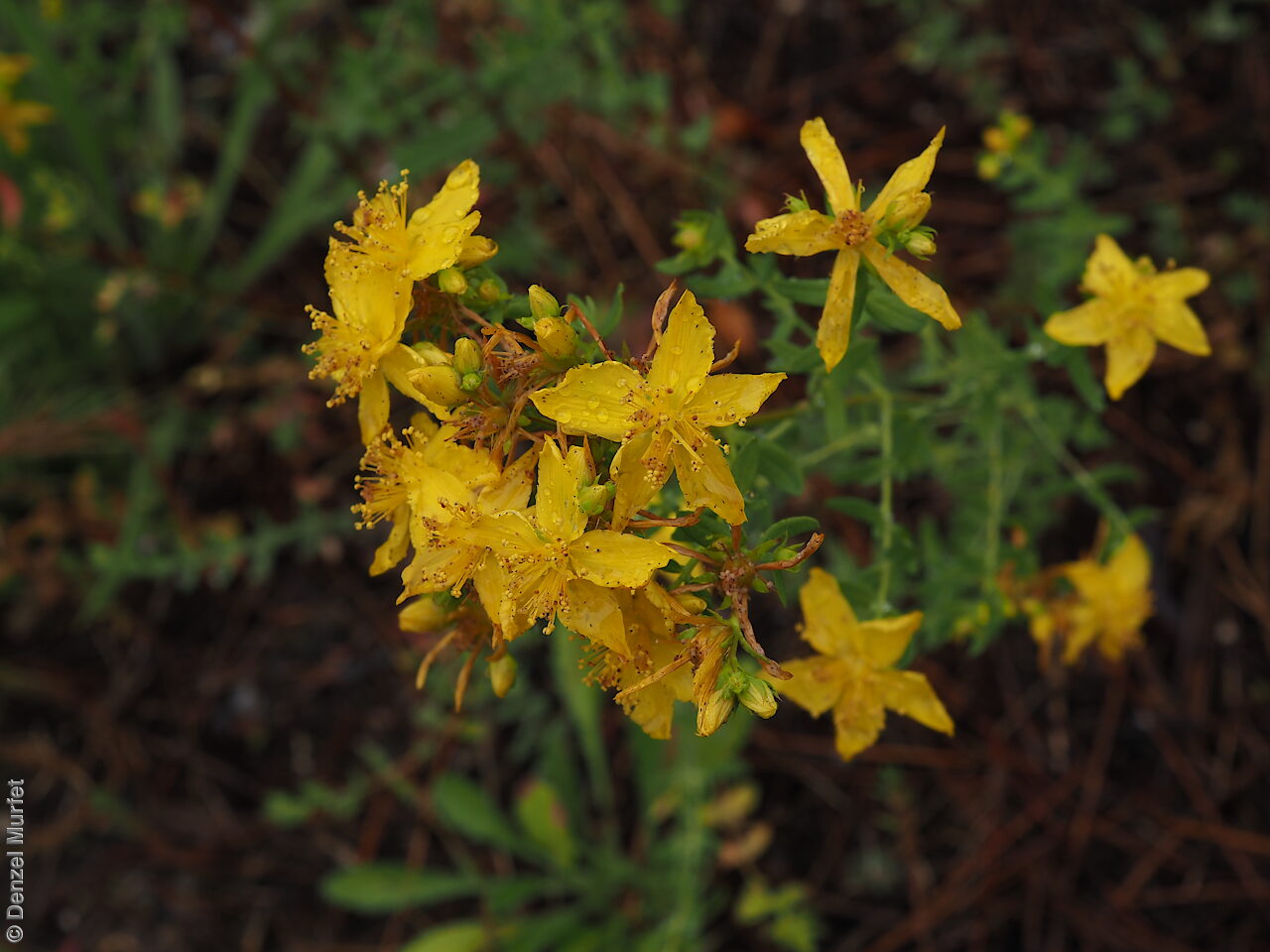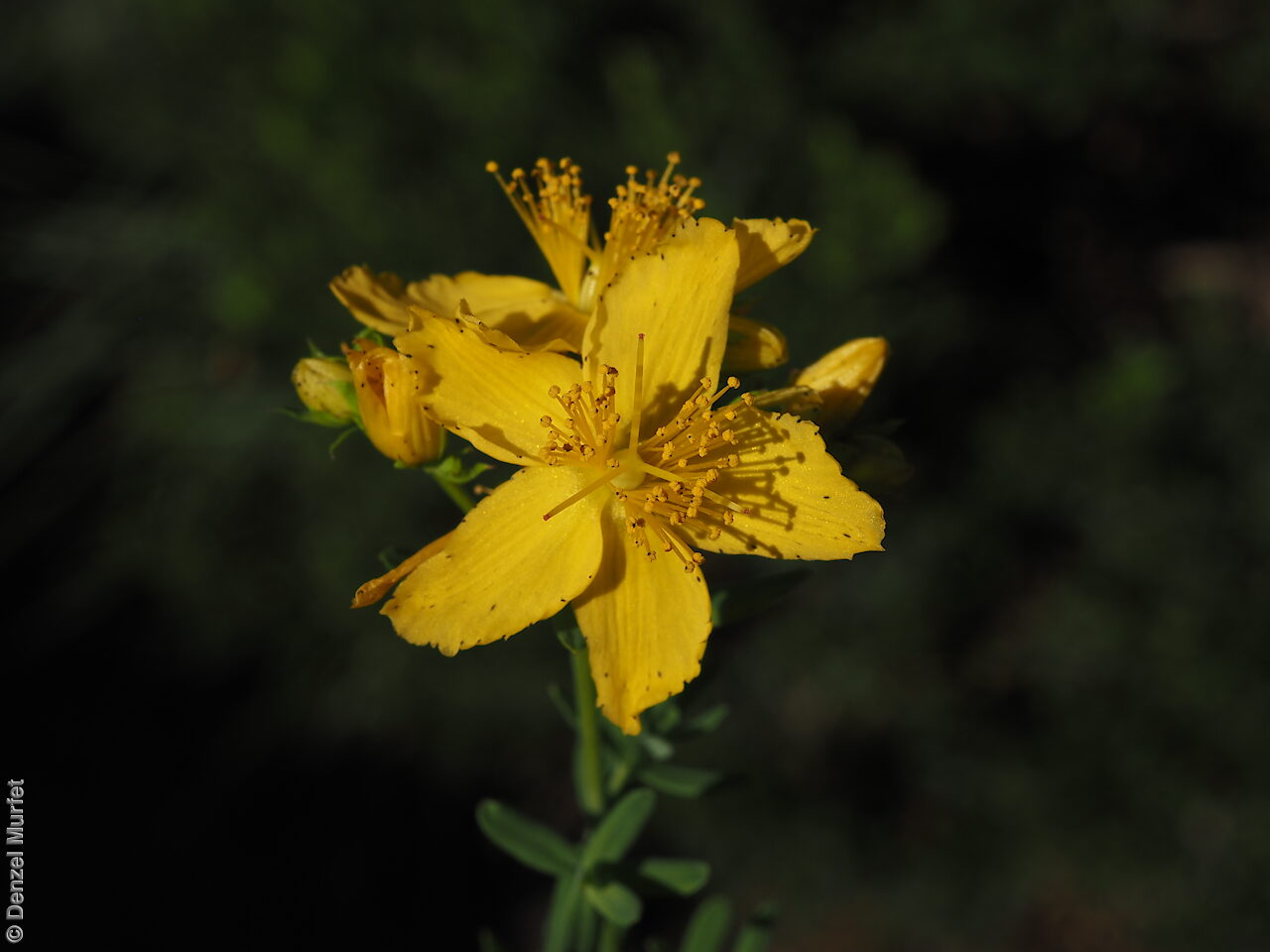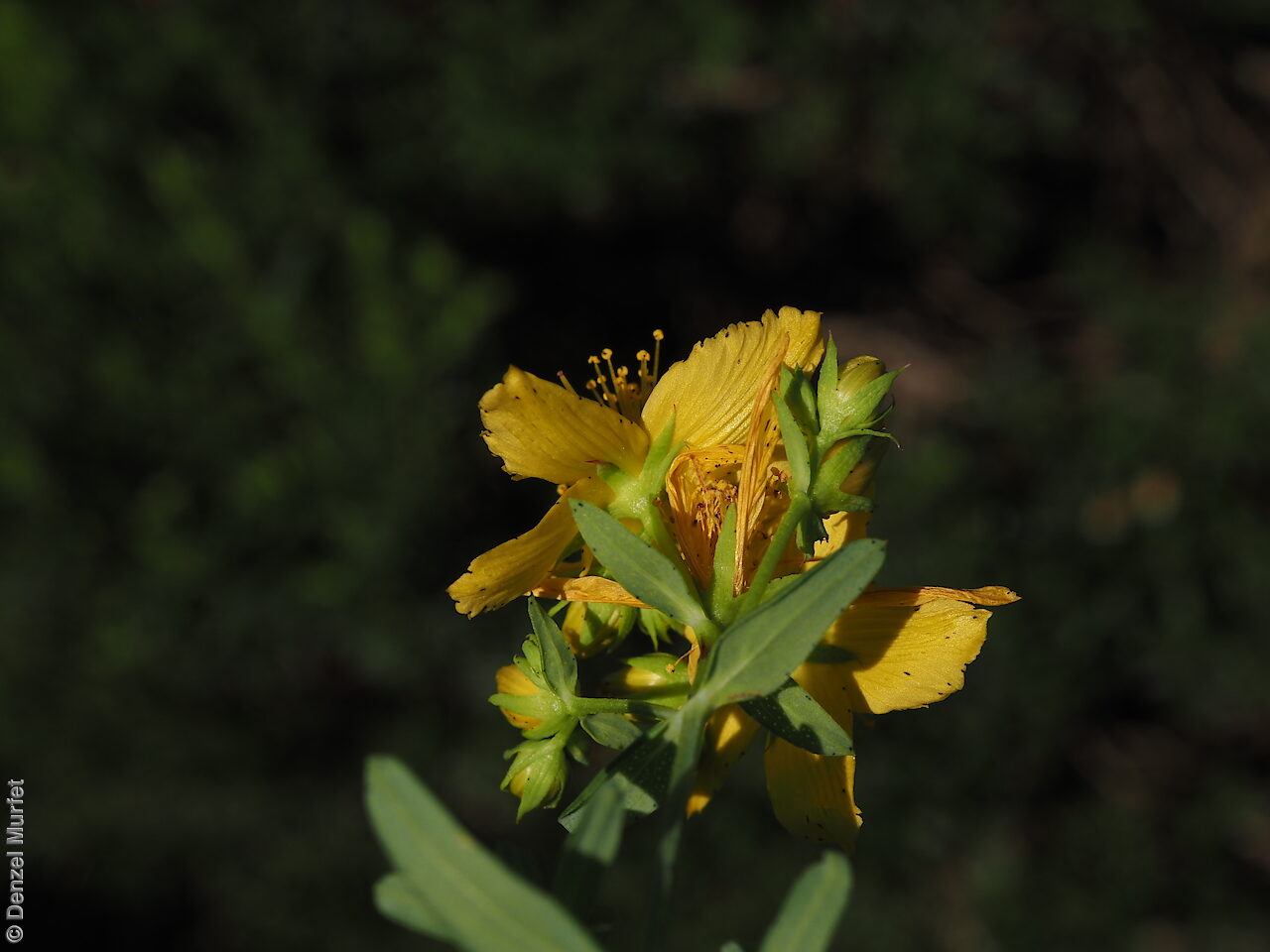














Botanical art
Prior names
Hypericum veronense
Hypericum perforatum, partly
Hypericum perforatum var. angustifolium
Common names
St John's Wort
Perforated St John's Wort
Etymology
Hypericum, from the Greek 'hyper', meaning above and 'eikon,' meaning image, referring to plants from the genus being hung above religious figures to ward off evil spirits during St John’s day, hence the common name. Perforatum, from Latin meaning perforation, referring to the leaves with lots of translucent oil glands appearing like little perforations or black dots.
Distribution and status
It is native to Europe, West Asia, North Africa, Madeira and the Azores and is recorded on the southern Eyre Peninsula, southern Flinders Ranges, Mount Lofty Ranges and the South-east in South Australia, growing in dryish areas. Also recorded from all States except for the Northern Territory. Introduced. Common in South Australia. Common in the other States.
Herbarium regions: Flinders Ranges, Eyre Peninsula, Northern Lofty, Murray, Southern Lofty, South Eastern, Green Adelaide
NRM regions: Adelaide and Mount Lofty Ranges, Eyre Peninsula, Northern and Yorke, South Australian Murray-Darling Basin
AVH map: SA distribution map (external link)
Plant description
Erect perennial herb to 90 cm high with several erect stems arising from woody, short-rhizomatous root-stock. Leaves ovate to oblong or linear, to 25 mm long and 5 mm wid; margins usually recurved; sometimes with superficial black dots and conspicuous translucent glands. Inflorescence numerous at tip of stems, with pale to deep golden-yellow, black-dotted on the flower margins. Flowering between November and February. Fruits are brown narrowly-ovoid capsule with many raised oblique, linear glands. Seeds are brown oblong seed to 1.1 mm long and 0.5 mm wide; surface reticulate
Seed collection and propagation
Collect seeds between January and April. Collect maturing capsule those turning pale-brown with brown seeds inside. Place the capsules in a tray and leave to dry for a week. Then rub the dried capsules gently by hand to dislodge the seeds. Use a sieve to separate the unwanted material. Be careful as the seeds are very small. Store the seeds with a desiccant such as dried silica beads or dry rice, in an air tight container in a cool and dry place.